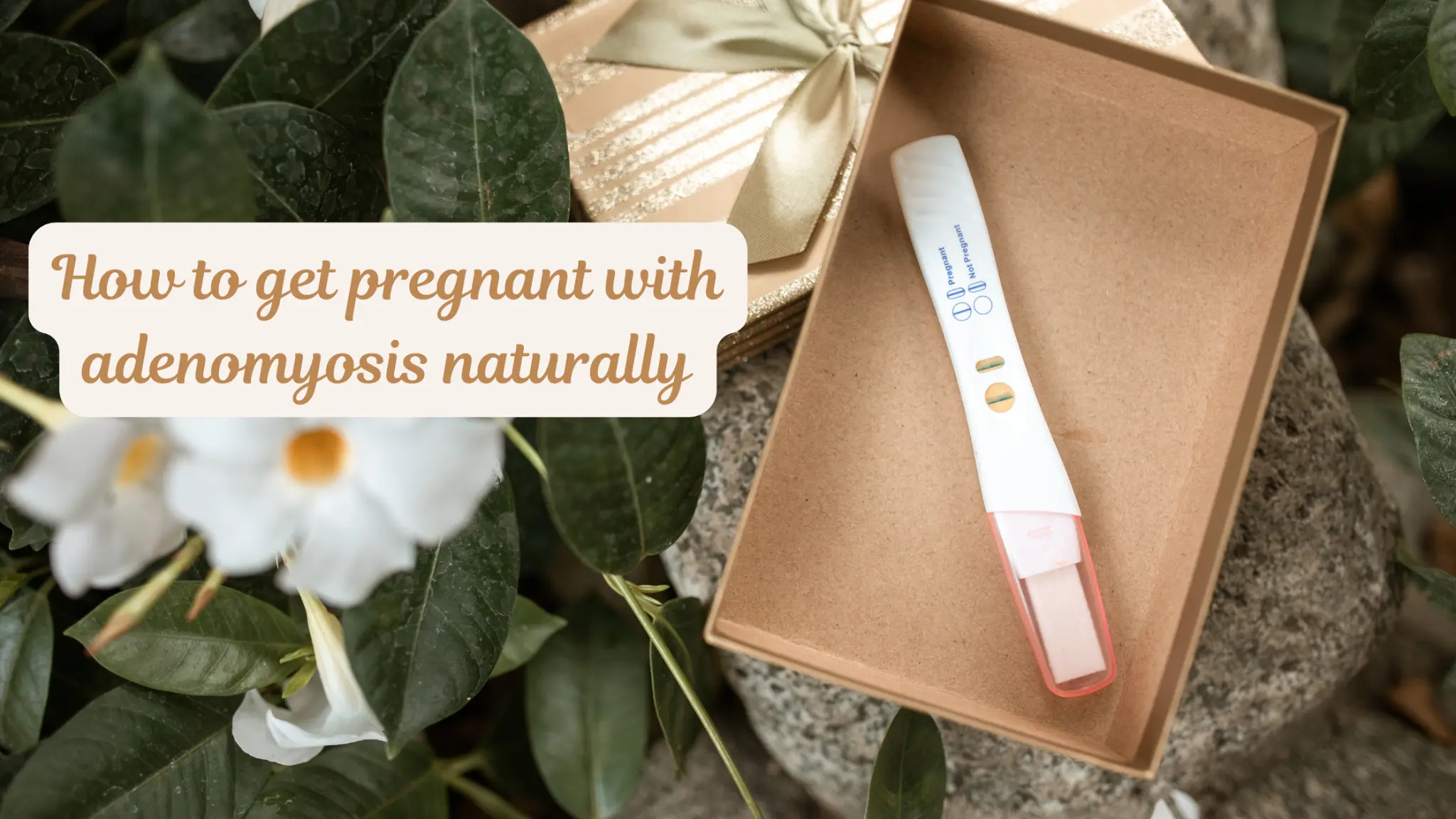How to get pregnant with Adenomyosis naturally
Introduction
Most females desire to have children and be happy mothers, but they have challenges getting pregnant. Some aspects of this phenomenon have not been elucidated fully, although several diseases and disorders that affect women have been described to increase the likelihood of infertility. This article will explore and answer a common question by many women: “Can Adenomyosis cause infertility?” Besides understanding what Adenomyosis is, how it is detected, and a treatment option that may improve fertility with Adenomyosis.
An Overview Of Adenomyosis
New studies also reveal that about 20 per cent of women under the age of forty have Adenomyosis, and almost 80 per cent of women with the disease are over forty years of age. The exact of Adenomyosis is yet unknown today, though 70% of women who have been diagnosed with this disease also experience endometriosis disease, 50% also display fibroid infection, and 35% display endometrial hyperplasia. Of all these conditions, estrogen dominance stands out as a component of all the above sicknesses.
Is Adenomyosis always to blame for infertility?
While adenomyosis can cause a woman’s inability to conceive, another one of the largest drivers of fertility numbers is the fact that more men and women are delaying childbearing. The fertility rate for an average woman begins to rise in the later teen years and toward the latter 20s. From the age of thirty, fertility is gradually affected, and in the mid-thirties, it is even affected at a faster rate.
Adenomyosis is most common in women post 40 years of age, and, therefore, one gets to ask if she cannot conceive due to Adenomyosis or due to her age and a decline in fertility that is inherent in that age.
Symptom of Adenomyosis
Adenomyosis occurs when endometrial tissue normally seen in the endometrium invades the myometrium.
This rogue tissue continues to operate as it was intended, thickening and then sloughing off and bleeding during menstruation each month, which may produce a variety of symptoms, including but not limited to:
- Heavy menstrual bleeding;
- Painful menstrual cramps;
- Abnormal menstrual cramps;
- Pelvic pain;
- Pain during sex;
- Distortion of the uterus;
- Maximum tenderness and softening of the cervix;
- Infertility.
Some of these symptoms are similar to those of many other women’s health disorders, making it difficult to diagnose Adenomyosis at times.
How can I become pregnant with Adenomyosis naturally?
Lifestyle modifications:
- Adenomyosis Diet
- Eating enough fresh vegetables
- Do not skip fruits
- Include grains and carbohydrates
- Incorporate healthy fats
- Reduce saturated fats and extra sugars
Maintain a Healthy Weight:
Weight has a very big impact on fertility, hence the fact that a person should maintain an appropriate weight. Thus, it is evident that both underweight and overweight conditions are hazardous to reproduction. Maintaining appropriate body weight, improving body mass index through exercise, and a proper diet help in hormonal regulation, hence improving fertility.
Regular Exercise:
Aquatic exercises include an insistence on daily movement to enhance fertility and general health. Exercise also has an effect on hormones, blood flow to the reproductive organs, and stress. Choose pleasant types of physical activities like walking, swimming or doing yoga, and exercise for at least 30 minutes six days a week.
Adenomyosis treatment for fertility:
The management goal of Adenomyosis regarding fertility issues may follow medical and surgical management. It’s always crucial to seek the advice of one’s physician in a bid to get advice best suited according to the circumstances. Here are some general treatment options: Here are some general treatment options:
Pain Management:
The type of medicine that may work in managing the pains that Adenomyosis causes includes the non-prescription drugs that are usually used in the treatment of aches and inflammations, like Ibuprofen or naproxen. Physicians may prescribe some medications to alleviate pain, including hormonal therapies, anti-inflammatory drugs and the like.
Hormonal Therapies:
Anti-estrogens, such as combined oral contraceptive pills, hormonal IUDs or progestin therapies, may assist in controlling the menstrual blood flow and decrease the symptoms. GnRH agonists are given to help bring about an artificial menopause, thus reducing estrogen levels and the pains of Adenomyosis.
Fertility Treatments:
In fertility, medical procedures such as IVF may be considered if Adenomyosis is the cause of infertility. IVF can be described as the removal fertilisation of the eggs outside the body and then the transfer of the embryos into the woman’s uterus.
Surgery:
There are times when a woman might need surgery to have the Adenomyosis-affected tissue removed. Adenomyomectomy is another method that can be done. In extremely bad cases, or if a woman does not want to bear children any longer, the complete or partial removal of the uterus is done.
Conclusion
This journey may be difficult, but with commitment, good medical care, and patience, you may complete it successfully. Keep in mind that every woman has a different path, so what suits one may not suit another. Always get individualised guidance from your gynaecologist.




Post Comment